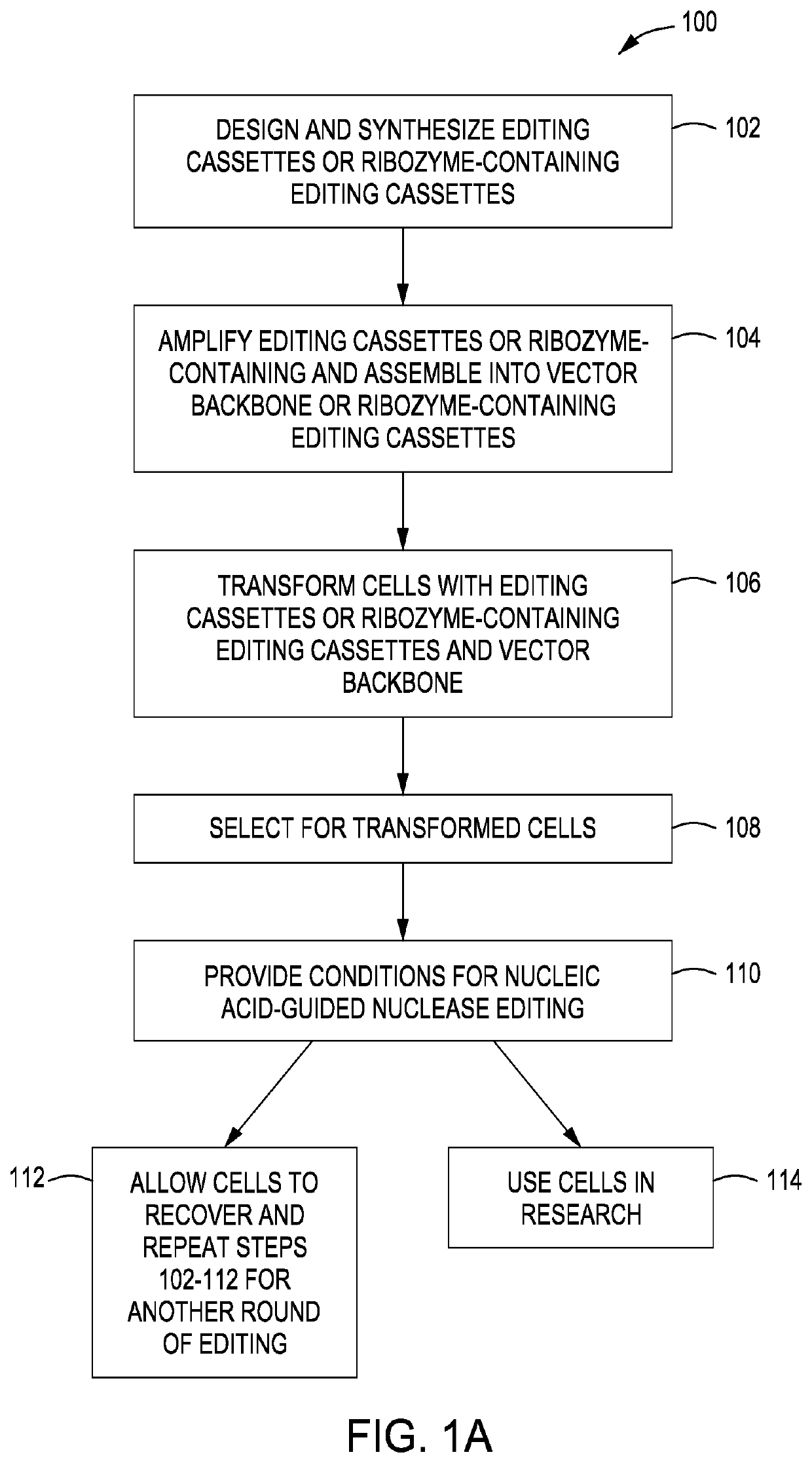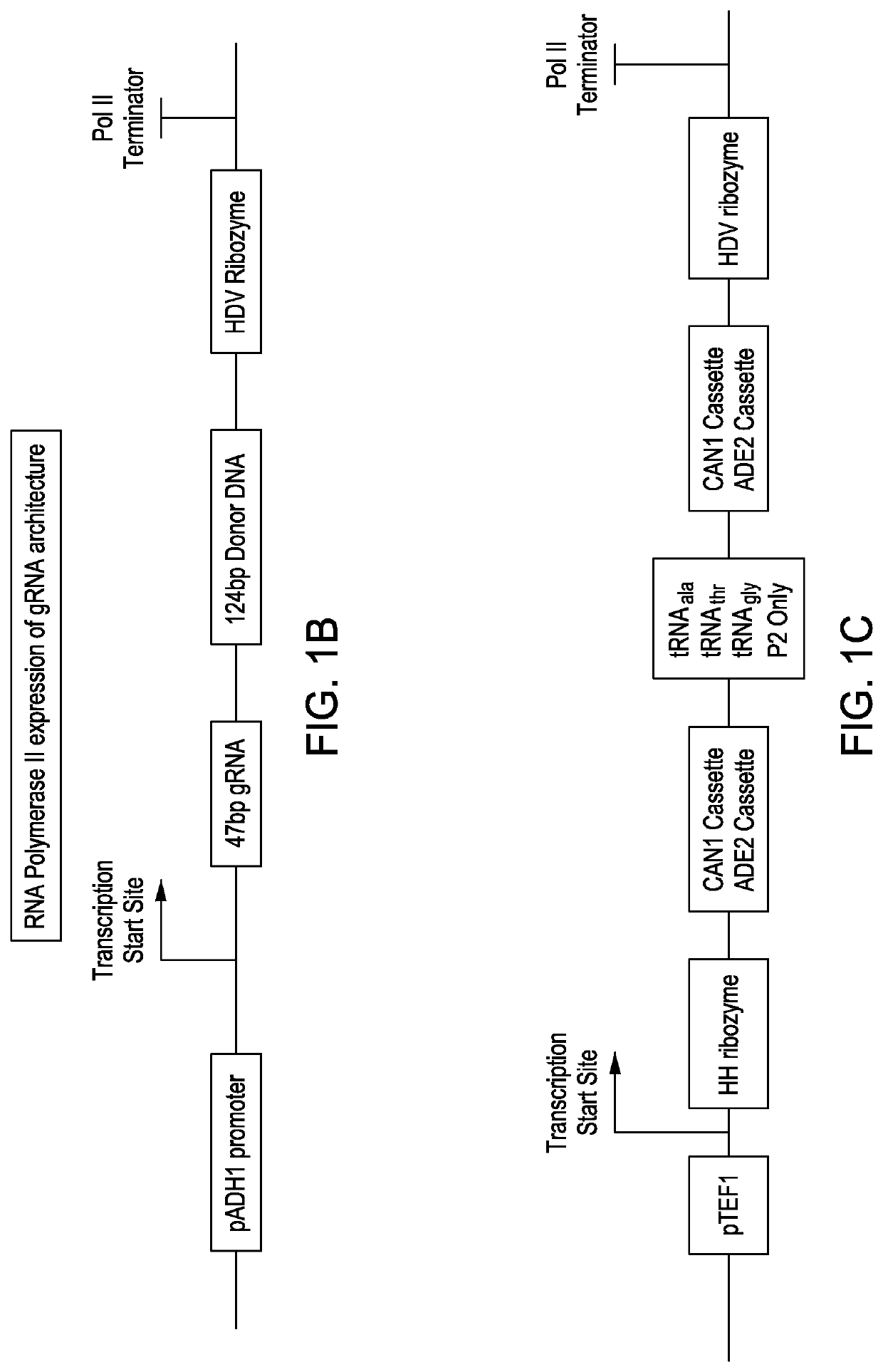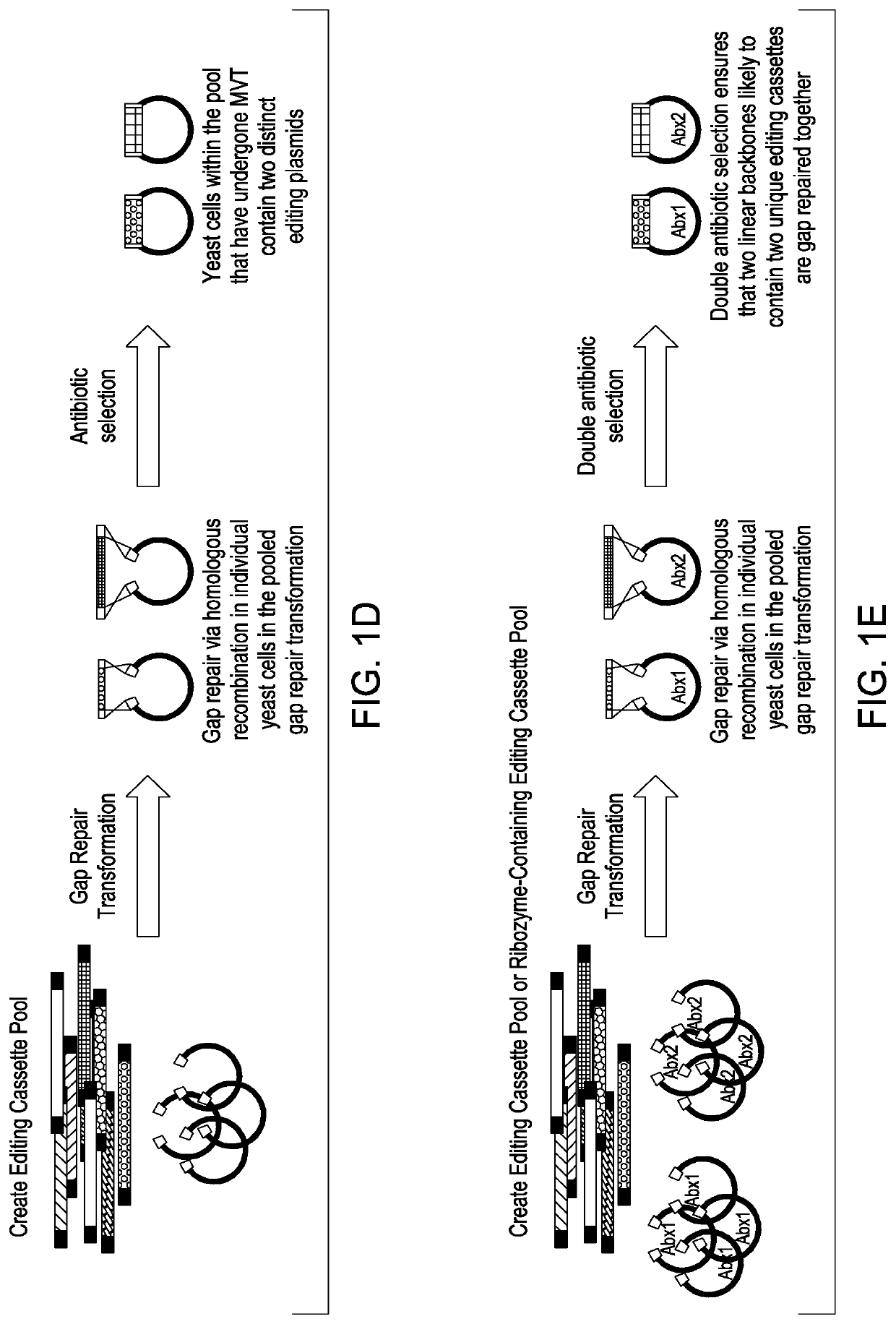Simultaneous multiplex genome editing in yeast
a genome editing and multiplex technology, applied in the field of nucleic acidguided nuclease editing of live yeast cells, can solve the problem of limited number of pol iii promoters in yeast, and achieve the effect of increasing sequence flexibility and low expression levels
- Summary
- Abstract
- Description
- Claims
- Application Information
AI Technical Summary
Benefits of technology
Problems solved by technology
Method used
Image
Examples
example 1
assette and Backbone Amplification and Assembly
[0204]Editing Cassette Preparation: 5 nM of oligonucleotides synthesized on a chip were amplified using Q5 polymerase in 50 μL volumes. The PCR conditions were 95° C. for 1 minute; 8 rounds of 95° C. for 30 seconds / 60° C. for 30 seconds / 72° C. for 2.5 minutes; with a final hold at 72° C. for 5 minutes. Following amplification, the PCR products were subjected to SPRI cleanup, where 30 μL SPRI mix was added to the 50 μL PCR reactions and incubated for 2 minutes. The tubes were subjected to a magnetic field for 2 minutes, the liquid was removed, and the beads were washed 2x with 80% ethanol, allowing 1 minute between washes. After the final wash, the beads were allowed to dry for 2 minutes, 50 μL 0.5×TE pH 8.0 was added to the tubes, and the beads were vortexed to mix. The slurry was incubated at room temperature for 2 minutes, then subjected to the magnetic field for 2 minutes. The eluate was removed and the DNA quantified.
[0205]Following...
example 2
the Cell Growth Module
[0208]One embodiment of the cell growth device as described herein was used to grow a yeast cell culture which was monitored in real time using an embodiment of the cell growth device described herein. The rotating growth vial / cell growth device was used to measure OD600 in real time of yeast s288c cells in YPAD medium. The cells were grown at 30° C. using oscillating rotation and employing a 2-paddle rotating growth vial. FIG. 9 is a graph showing the results. Note that OD600 6.0 was reached in 14 hours.
example 3
entration
[0209]The TFF module as described above in relation to FIGS. 4A-4E has been used successfully to process and perform buffer exchange on yeast cultures. A yeast culture was initially concentrated to approximately 5 ml using two passes through the TFF device in opposite directions. The cells were washed with 50 ml of 1M sorbitol three times, with three passes through the TFF device after each wash. After the third pass of the cells following the last wash with 1M sorbitol, the cells were passed through the TFF device two times, wherein the yeast cell culture was concentrated to approximately 525 μl. FIG. 10 presents the filter buffer exchange performance for yeast cells determined by measuring filtrate conductivity and filter processing time. Target conductivity (˜10 μS / cm) was achieved in approximately 23 minutes utilizing three 50 ml 1M sorbitol washes and three passes through the TFF device for each wash. The volume of the cells was reduced from 20 ml to 525 μl. Recovery o...
PUM
| Property | Measurement | Unit |
|---|---|---|
| depth | aaaaa | aaaaa |
| height | aaaaa | aaaaa |
| width | aaaaa | aaaaa |
Abstract
Description
Claims
Application Information
 Login to View More
Login to View More - R&D
- Intellectual Property
- Life Sciences
- Materials
- Tech Scout
- Unparalleled Data Quality
- Higher Quality Content
- 60% Fewer Hallucinations
Browse by: Latest US Patents, China's latest patents, Technical Efficacy Thesaurus, Application Domain, Technology Topic, Popular Technical Reports.
© 2025 PatSnap. All rights reserved.Legal|Privacy policy|Modern Slavery Act Transparency Statement|Sitemap|About US| Contact US: help@patsnap.com



